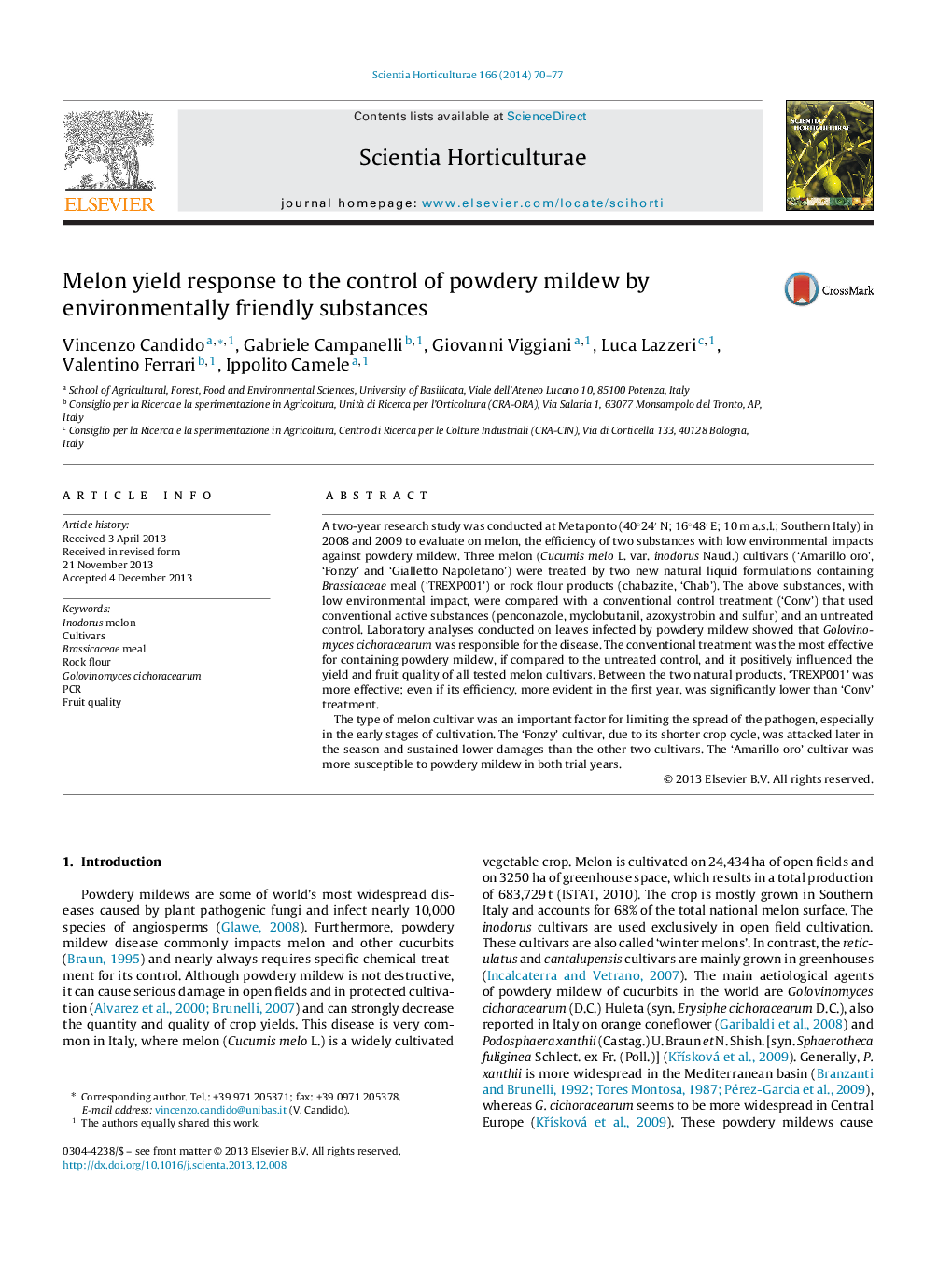| Article ID | Journal | Published Year | Pages | File Type |
|---|---|---|---|---|
| 4566934 | Scientia Horticulturae | 2014 | 8 Pages |
•Three melon cultivars were treated with two new natural antioidium formulations.•The results were compared to a conventional control strategy.•The conventional control strategy determined a higher control of powdery mildew.•Between natural products, the one containing Brassicaceae meal was more effective.•The cultivar was an important factor to limit the spread of powdery mildew.
A two-year research study was conducted at Metaponto (40°24′ N; 16°48′ E; 10 m a.s.l.; Southern Italy) in 2008 and 2009 to evaluate on melon, the efficiency of two substances with low environmental impacts against powdery mildew. Three melon (Cucumis melo L. var. inodorus Naud.) cultivars (‘Amarillo oro’, ‘Fonzy’ and ‘Gialletto Napoletano’) were treated by two new natural liquid formulations containing Brassicaceae meal (‘TREXP001’) or rock flour products (chabazite, ‘Chab’). The above substances, with low environmental impact, were compared with a conventional control treatment (‘Conv’) that used conventional active substances (penconazole, myclobutanil, azoxystrobin and sulfur) and an untreated control. Laboratory analyses conducted on leaves infected by powdery mildew showed that Golovinomyces cichoracearum was responsible for the disease. The conventional treatment was the most effective for containing powdery mildew, if compared to the untreated control, and it positively influenced the yield and fruit quality of all tested melon cultivars. Between the two natural products, ‘TREXP001’ was more effective; even if its efficiency, more evident in the first year, was significantly lower than ‘Conv’ treatment.The type of melon cultivar was an important factor for limiting the spread of the pathogen, especially in the early stages of cultivation. The ‘Fonzy’ cultivar, due to its shorter crop cycle, was attacked later in the season and sustained lower damages than the other two cultivars. The ‘Amarillo oro’ cultivar was more susceptible to powdery mildew in both trial years.
